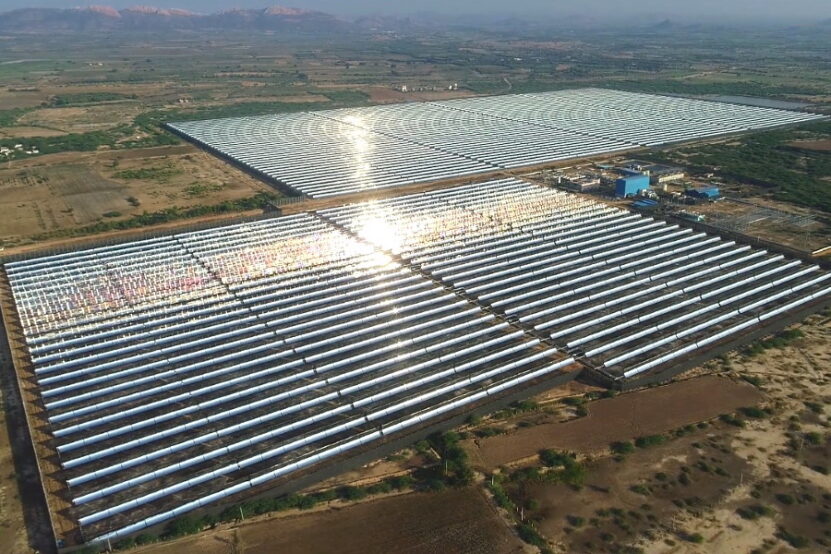As the world increasingly turns its attention towards sustainable and renewable energy sources, the significance of thermal engineering in this transition cannot be overstated. Thermal engineering, a branch of engineering that focuses on heating and cooling processes, plays a pivotal role in the development, efficiency, and implementation of renewable energy technologies. We dive into the multifaceted contributions of thermal engineering to renewable energy, exploring its critical impact and potential future developments.
Thermal Engineering and Renewable Energy

Thermal engineering is relevant to renewable energy stems from its fundamental principles – understanding and managing heat transfer and energy conversion. Thermal engineering is crucial for maximizing efficiency and performance in renewable energy systems, such as solar, wind, and geothermal. For example, thermal engineers design and optimize solar panels in solar power systems to capture and convert the sun’s heat energy into electricity more effectively. Similarly, in geothermal energy, where heat from the Earth’s core is harnessed, thermal engineering ensures that this heat is efficiently transferred to generate electricity or provide heating.
Innovations in Thermal Management
The ongoing innovations in thermal management are revolutionizing renewable energy systems. Advances in materials science, for instance, are leading to the development of more efficient thermal conductors and insulators, enhancing the overall performance of renewable energy systems. Another area of innovation is in heat transfer fluids, which are critical in systems like concentrated solar power plants. The development of new fluids with higher heat capacities and lower freezing points can significantly improve efficiency and lower costs.
Challenges and Solutions
Despite its potential, integrating thermal engineering with renewable energy is challenging. One of the main challenges is the intermittent nature of renewable sources like solar and wind. Thermal engineering provides solutions through thermal energy storage systems, which store excess energy generated during peak times for later use, ensuring a steady and reliable energy supply.
Another challenge is improved heat exchangers, which transfer heat in systems like geothermal power plants. Advanced thermal engineering is leading to the design of more efficient heat exchangers that can operate under extreme conditions, increasing the feasibility and efficiency of renewable energy systems.
The Role of Thermal Engineering in Solar Energy

In the realm of solar energy, thermal engineering plays a particularly crucial role. Solar thermal systems, which use mirrors or lenses to concentrate sunlight, generate heat that is then used to produce electricity. The efficiency of these systems heavily depends on the effective management of heat, which is where thermal engineering comes into play. Thermal engineers work on optimizing the design of these systems to maximize heat absorption and minimize losses, directly impacting the efficiency and viability of solar energy.
This involves intricate calculations and simulations to understand heat flow dynamics and material responses under various environmental conditions. Thermal engineers are also instrumental in developing advanced cooling techniques to prevent overheating in solar panels, which can significantly reduce their efficiency and lifespan. By integrating these innovative solutions, thermal engineering is not only enhancing the performance of solar thermal systems. Still, it makes solar energy a more competitive and reliable alternative in the global market.
Enhancing Wind Energy with Thermal Engineering
Wind energy, another major player in the renewable sector, also benefits from thermal engineering. Thermal aspects significantly influence the performance and longevity of wind turbines. For instance, thermal engineers develop cooling systems for the turbine’s generator and gearbox, which are prone to overheating. By effectively managing the heat in these components, thermal engineering improves the efficiency of wind turbines and extends their operational life, making wind energy a more reliable and sustainable option.
Geothermal Energy: A Testament to Thermal Engineering

Geothermal energy, which harnesses the Earth’s internal heat, is an excellent example of thermal engineering’s direct application in renewable energy. Thermal engineers design systems that extract heat from the Earth’s crust, converting it into electricity or using it for heating purposes. The efficiency of these systems depends heavily on the thermal engineering design, which must consider factors like heat transfer, material selection, and system integration.
The Future of Thermal Engineering in Renewable Energy
Looking ahead, the role of thermal engineering in renewable energy is set to become even more significant. As the demand for renewable energy grows, the need for innovative thermal management solutions will rise. Thermal engineers will continue to play a crucial role in developing new technologies and improving existing ones, driving the efficiency and effectiveness of renewable energy sources.
Emerging Technologies and Research

The future will see the emergence of new technologies and research areas in thermal engineering that could revolutionize renewable energy. For example, research into nanotechnology and advanced materials could lead to the development of ultra-efficient thermal conductors or storage systems, drastically improving the performance of renewable energy systems. Additionally, ongoing research in phase change materials (PCMs) offers promising avenues for enhancing thermal energy storage capabilities, allowing for more effective energy supply and demand management.
Innovative cooling techniques leveraging cutting-edge computational fluid dynamics (CFD) are also being explored to optimize the operation of renewable energy equipment under varying environmental conditions. These advancements promise to increase the efficiency and reliability of renewable energy systems and aim to reduce the costs associated with energy production and storage, making renewable energy more accessible and sustainable for future generations.
Global Impact and Sustainability
The global impact of thermal engineering in renewable energy extends beyond technological advancements. By improving efficiency and reducing the costs of renewable energy, thermal engineering contributes significantly to the fight against climate change. It also enhances energy security and reduces fossil fuel dependency, promoting a more sustainable and resilient energy future.
Final Perspectives
Thermal engineering is not just a component of the renewable energy sector but a driving force that will shape its future. The innovations and solutions provided by thermal engineering are essential for efficiently and effectively harnessing renewable energy sources. As the world moves towards a more sustainable future, the synergy between thermal engineering and renewable energy will be crucial in meeting our energy needs while protecting our planet. It is a partnership that promises a brighter future and is essential for the continued growth and success of renewable energy as a viable and sustainable energy source.

